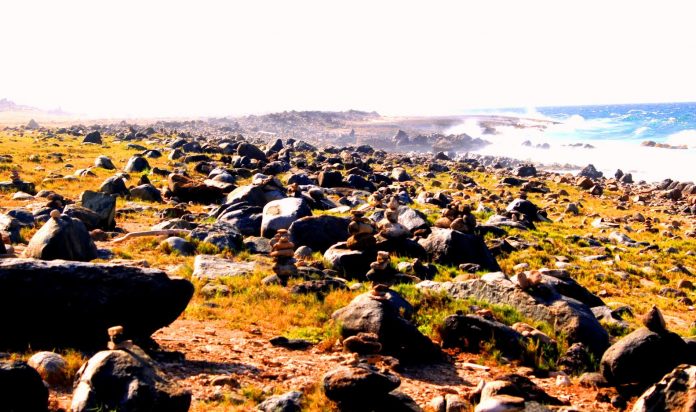Etnia Nativa through Island Insight facilitates cultural awareness, education and safeguards Aruba’s heritage by elevating each reader into an island keeper state of mind. Be encouraged to discover in every episode the true native effect, live it, discover more reasons to love Aruba behind our beaches and living up your stay in an incredibly wonderful way.
Our island is a tiny tourist destination with a fragile ecosystem, covering thousands of years of history. Here is where Etnia Nativa’s main objective comes to mind through educating readers over Aruba’s heritage. We believe when you love and value what you have, ones greatest desire becomes to protect it.
During this episode we want to explain you about the problems caused by the stacking up of stones, a practice that you have probably seen during one of your tours around the island or if you walk along the north coast you will see stones stacked forming curious structures, even though It is a tradition that for many cultures, stone piling had and have a very special meaning in the form of a religious to a representation of inner balance. The idea is that stones can act as a medium through which these concepts are expressed. Stones were considered transendental symbols of perenniality since the primitive era, invariability, immobility, unity, energy and strength; for these reasons they have also been adored for the sacredness they contained due to their shape, color, origin or size; granting them both magical and spiritual significance.
But the reality is that this “banal fashion” copied or imported from past cultures resulted in an extremely aggressive practice with a harmful impact on biodiversity and favoring soil erosion. They are small constructions, originally known by the name of “apacheta”, a word that comes from the native American languages Quechua and Aymara and means to stack. The aforementioned cultures based the stacking of stones as an offering in honor of the deities of the place.
Throughout our indigenous America “the apachetas” have been considered monuments of sacred value. In Peru, these “sacred monuments” were built at different points along the road, their source being an ancient Inca custom. This old custom that over time turned “those stacked stones” into marks, like milestones, that marked the roads. That is why a custom has come down to the present day, which is that precisely when a hiker/traveler arrives at these points, they ask and thank the Pachamama (Mother Earth) and the Apus (spirits of the mountains) for their safe journey. It was believed that leaving a stone as an indication, protected the traveler who passed through the place, which was offered together with the coca leaf, tobacco or fermented drinks. The vast majority of “las apachetas” appear solitary and isolated and it is believed that removing the stones from the apacheta is desecration and equivalent to sacrilege.
The unfortunate reality for our island is that the piling up of stones damages the habitat of animal and plant species that use these stones as shelter or depend on them and the microclimatic conditions associated with them.
Also in certain areas where these characteristic structures have proliferated in recent years by the engouragment of untrained tour guids, the growth of certain plants is affected since their roots, which are normally protected by rocks, are exposed.
If you are the next person to see some “apalacheta” please, get involved in the conservation of our fragile environment and carefully try to put them in places on the ground where there is no vegetation so as not to generate new impacts on the ecosystem.
In addition to discourage this practise, it will prevent the piling up of new “apachetas”. The construction of these structures, in addition to being a direct attack on the environment, is an attack on the natural landscape. Help us take care of Aruba don not liter and do not pile up stones. Just give a prayer for our island if you are religouse or wish to set a spiritual statement!
If you love Aruba interested in its origins and its cultural heritage, we invite you to be part of an exclusive visit at Etnia Nativa -a visit off the tourist grid- private residential house sharing collections of native art, archaeological artifacts and historic furniture, while the facility itself is the result of the transforming and recycling of materials. Meet Anthony Croes, our columnist at his museum/ home. The only and authentic native Aruban cultural encounter! Live the experience. R.S.V.P. Whatsapp + 297 592 2702- or mail: etnianativa03@gmail.com




















